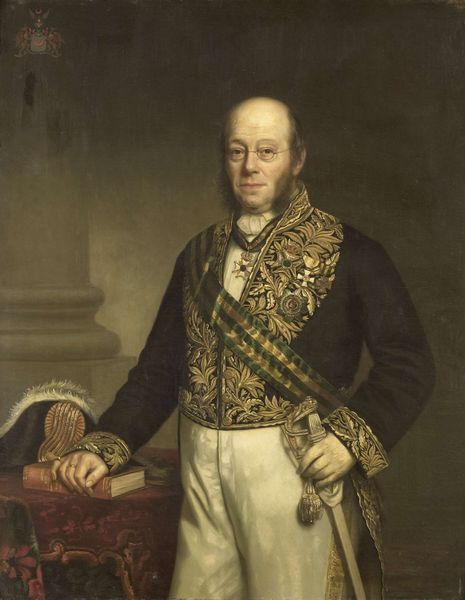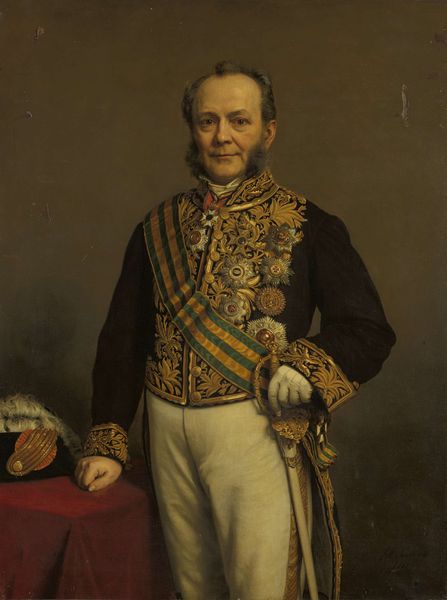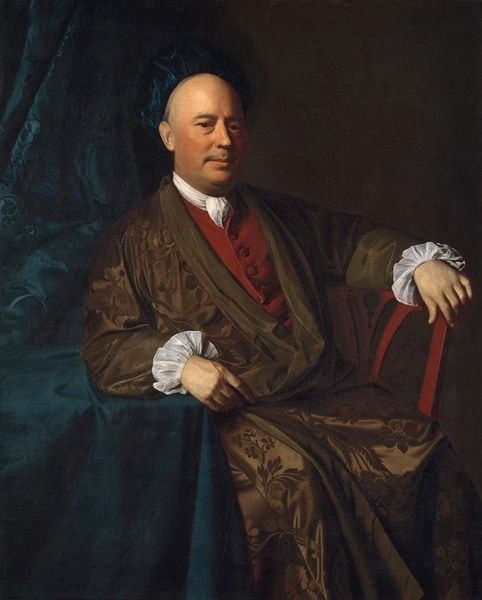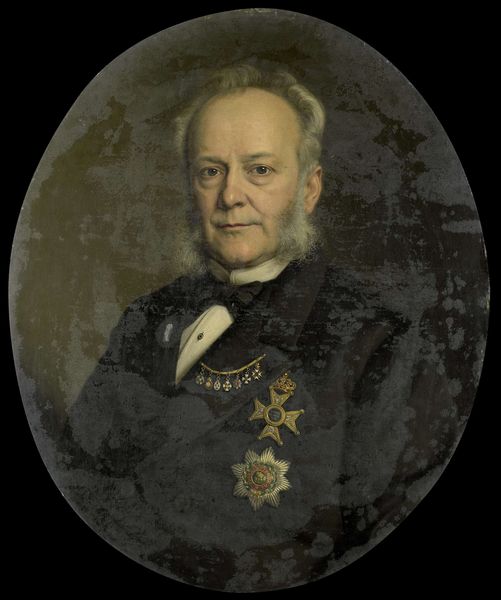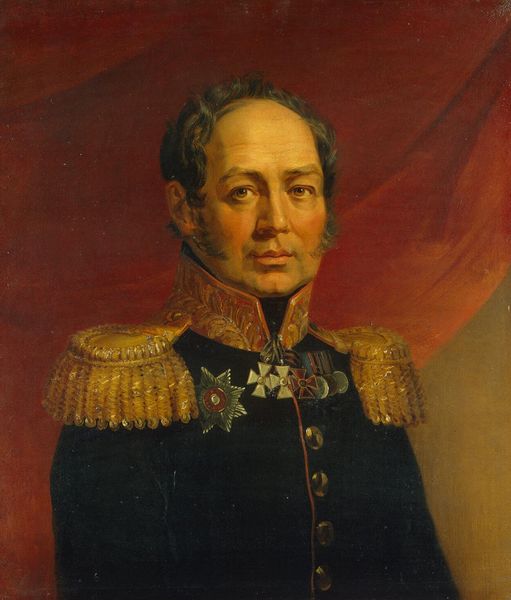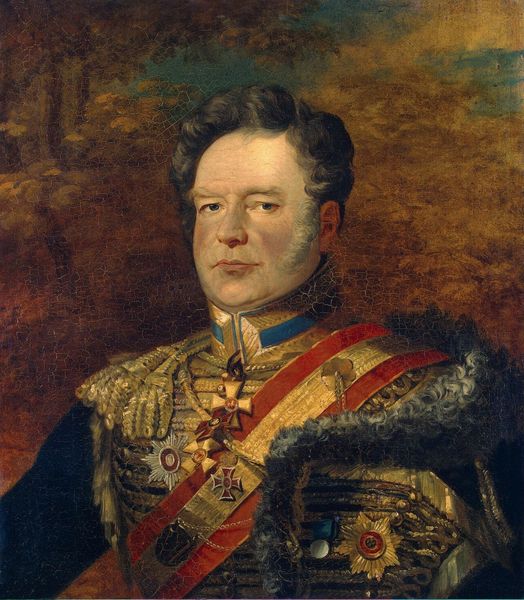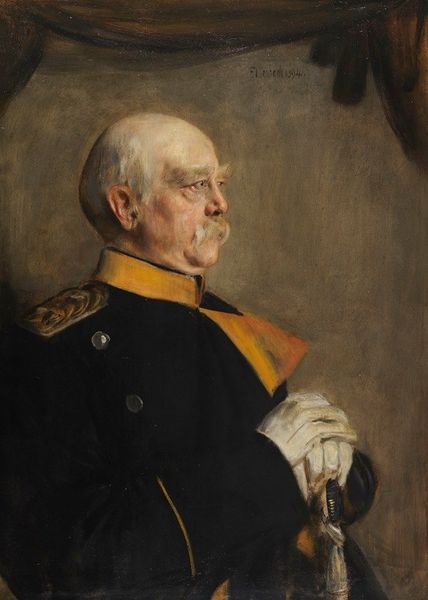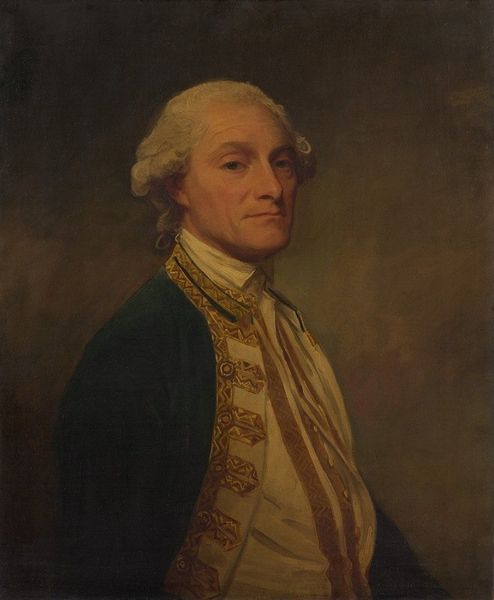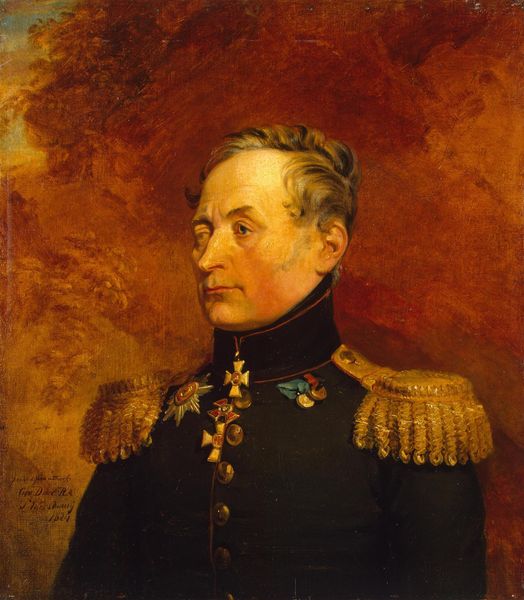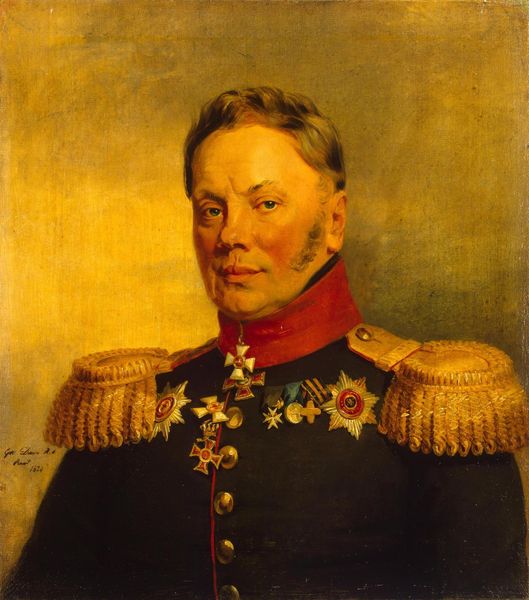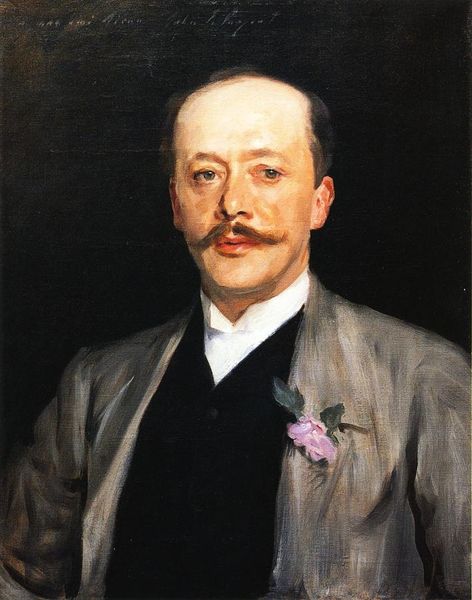
painting, oil-paint
#
portrait
#
portrait
#
painting
#
oil-paint
#
academic-art
#
modernism
#
realism
Dimensions: 100.4 x 77.5 cm
Copyright: Public domain
Curator: The piercing gaze in this portrait grabs my attention right away. It feels incredibly imposing, doesn't it? Editor: Indeed. This is John Singer Sargent’s 1914 oil on canvas depicting George Nathaniel Curzon, Marquis Curzon of Kedleston. Painted near the zenith of Curzon's career, we see the embodiment of power and the visual representation of the British Empire. Curator: And a particularly thorny kind of power, steeped in class privilege and colonial enterprise. You can practically feel the weight of the velvet robes and ornate golden chain around his neck. What statements do you think Sargent is trying to make about elitism and the British Empire in general? Editor: It's important to consider that Sargent was working within a tradition of portraiture that largely served the interests of the elite. Portraits like these were instruments for forging a desired identity and confirming the power structures of the day. Curzon's bearing, his dress, these are deliberate cues meant to convey authority. Curator: Exactly, it's a stage where masculinity, class, and colonial administration intertwine. What fascinates me is that through his confident posture and elevated robes, we gain access to understanding how the system creates identity through visual displays of status and prestige. It does something important: allows us to see it in action, exposed for its manufactured nature. Editor: True. We can’t ignore the artistic choices Sargent makes as well. His mastery of light, the detail in the textures—these enhance the image of power, yet he also offers us some insight on how empires build themselves through image control. Curator: Precisely. It’s this tension, this tightrope walk between perpetuation and exposure, that I find so compelling here. What do you find most lasting about the piece, as a statement? Editor: I see this artwork serving as a historical record of how power presented itself visually. We must recognize the societal and cultural influences in effect during its creation. And of course, we need to consider this in how it is viewed in the present moment. Curator: Agreed, seeing this portrait with contemporary eyes makes the historical power dynamics more noticeable. That critical dialogue transforms the viewing experience.
Comments
No comments
Be the first to comment and join the conversation on the ultimate creative platform.
